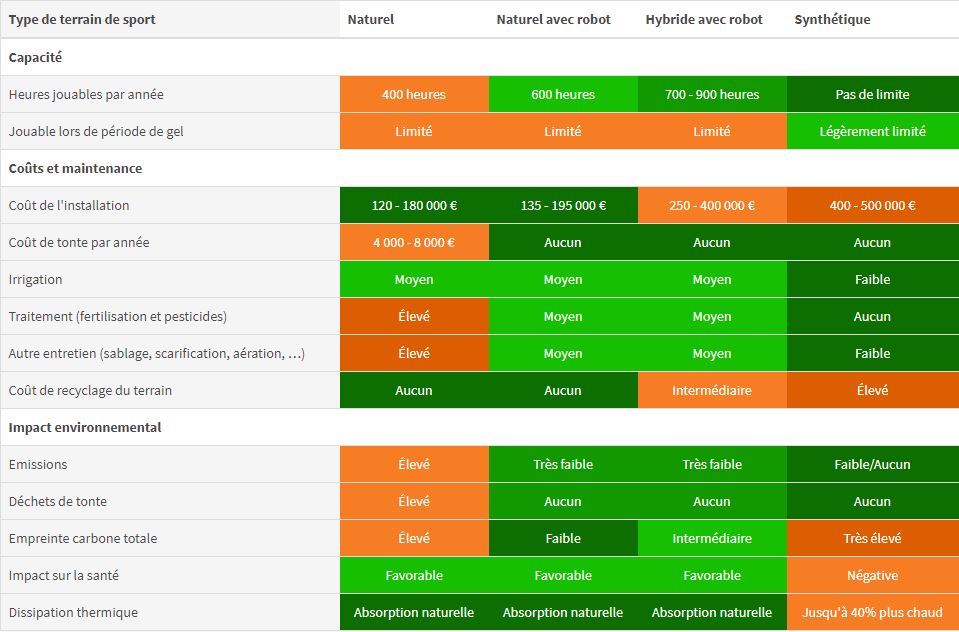
The cost of a synthetic pitch: a cost-effective investment?
The financial argument has often been put forward: “Thanks to the subsidies granted, the playing hours available, and the virtually zero maintenance costs, a synthetic pitch is the most cost-effective solution.” However, this statement is not accurate. The costs of installing (€400–500,000) and recycling the pitch are high, and the argument about unlimited hours needs to be qualified.
In point of fact, do all clubs really make use of the additional hours made possible by the synthetic? And what additional costs are incurred by using a pitch at night?
Is a natural pitch a durable choice?
A natural pitch is the longest-lasting choice, provided it is well maintained. In point of fact, the quality of the pitch maintenance is what will determine the durability of a natural pitch and the cost of maintaining it. The enormous advantage in maintaining natural pitches using robot mowers is the efficiency and quality of the cut, and all at a competitive cost. Moreover, opting for a natural pitch with robot mowing is an environmentally-friendly choice.
The environmental impact of synthetic pitches is colossal: synthetic fibres from the petrochemical industry, very negative carbon footprint for construction, and high recycling cost for synthetic pitches after 10 years’ use. Furthermore, a number of studies show that the risk of injury is greater on a synthetic pitch. Finally, the scientific studies contradict each other, but it is not proven that the “rubber infill” used on synthetic pitches, made from car tyre residues, is not carcinogenic.
| Type of pitch | Natural | Natural using robot | Hybrid using robot | Synthetic |
|---|---|---|---|---|
| Capacity | ||||
| Playable hours per year | 400 hours | 600 hours | 700 – 900 hours | Unlimited |
| Usable during periods of frost | Limited | Limited | Limited | Slightly limited |
| Costs and maintenance | ||||
| Installation | € 120 – 180 000 | € 135 – 195 000 | € 250 – 400 000 | € 400 – 500 000 |
| Annual cost of mowing | € 4 000 – 8 000 | None | None | None |
| Irrigation | Medium | Medium | Medium | Low |
| Treatment (fertilizer & pesticides) | High | Medium | Medium | None |
| Other maintenance (sanding, scarification, aeration, etc.) | High | Medium | Medium | Low |
| Cost of recycling pitch | None | None | Intermediate | High |
| Environmental impact | ||||
| Emissions | High | Very low | Very low | Faible/None |
| Clippings | High | None | None | None |
| Total carbon footprint | High | Low | Intermediate | Very high |
| Impact on health | Favorable | Favorable | Favorable | Negative |
| Thermal dissipation | Natural absorption | Natural absorption | Natural absorption | Up to 40% warmer |
In conclusion, for small and medium football clubs, natural pitches equipped with a robot mower and high-quality maintenance are the best alternative. The larger football clubs in major towns will do well to combine a synthetic or hybrid football pitch with additional natural areas equipped with e robot mower.




